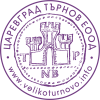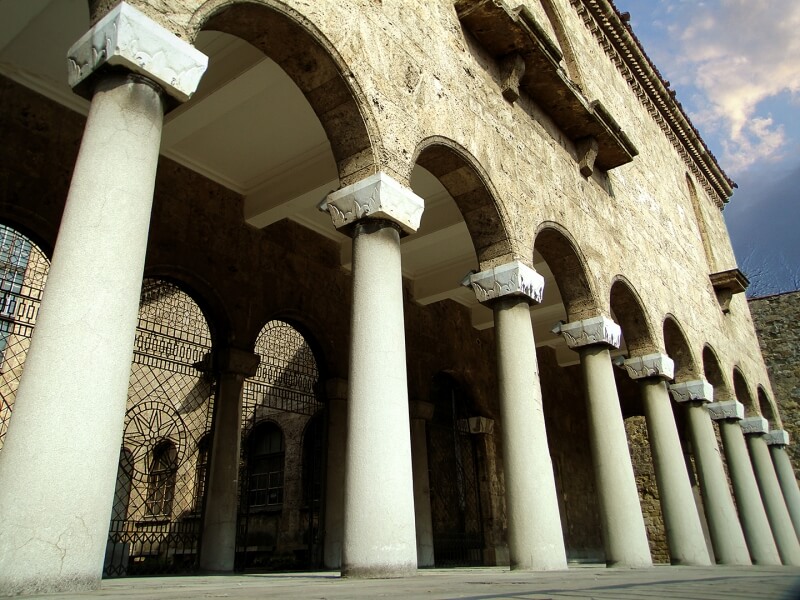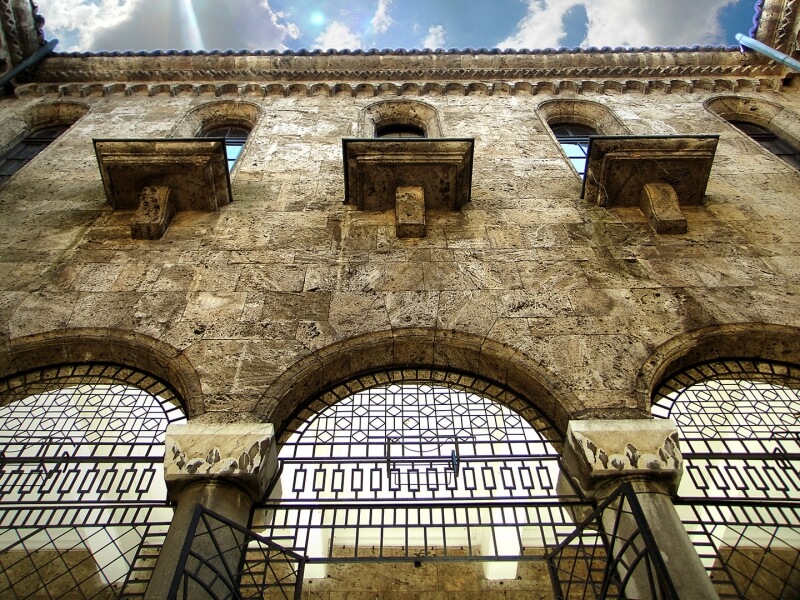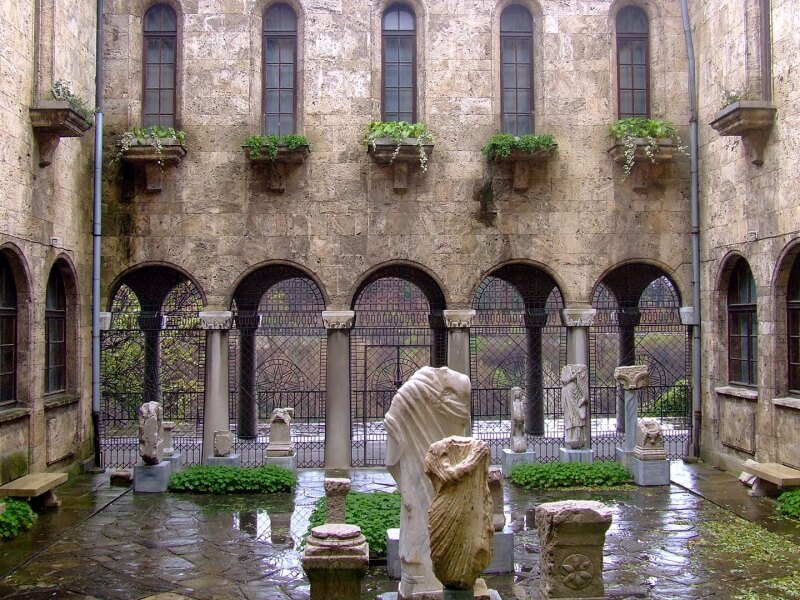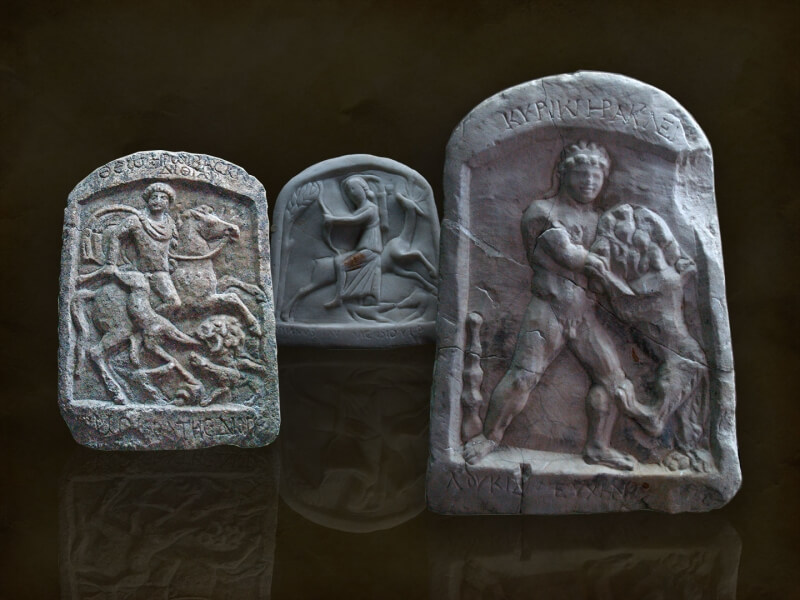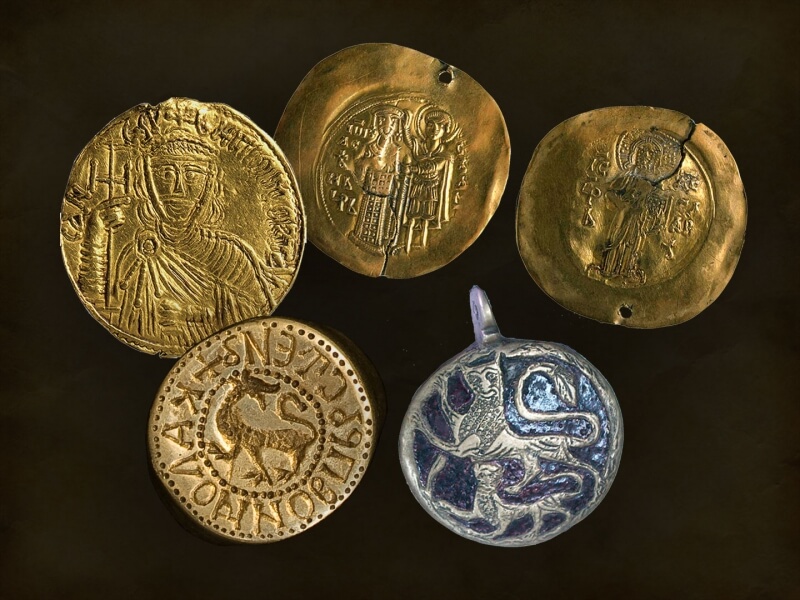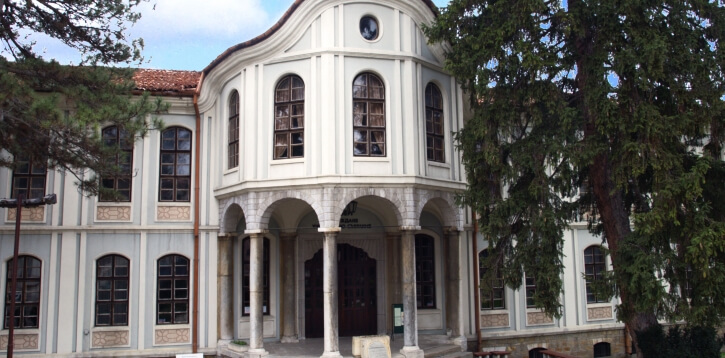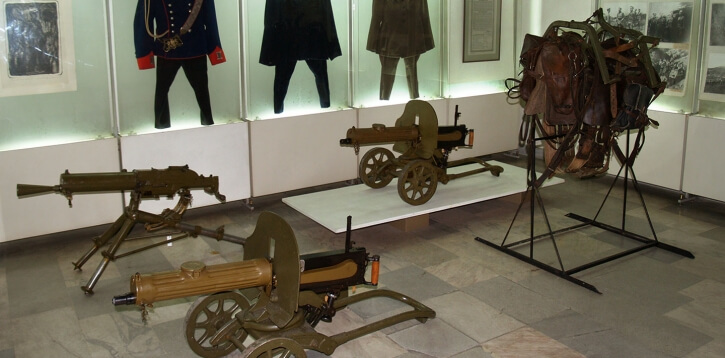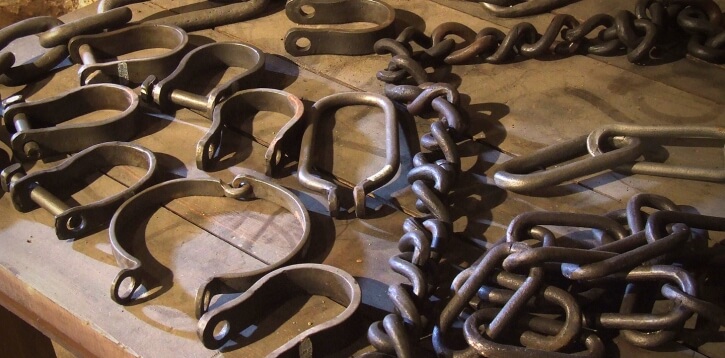The Archaeological museum which housed the exposition “Veliko Tarnovo – the capital of Bulgaria XII – XIV c.” is situated westward to the square of “Saedinenie”. The thousand year old history and culture of the region of Tarnovo is traced out there. The accent is on the period of the Second Bulgarian kingdom.
The prehistory is presented in the first hall. We can see some archaeological findings from the tumulus of Samovodene (5700-5000 BC), the settlement in the area of “Kachitsa”, V.Tarnovo (5300-3800BC), Djulyunitsa (4800-4000 BC), tumuli of the village of Hotnitsa, the waterfall near Hotnitsa (3600 BC), the Thracian village on the hill of Tsarevec.
The point is on the golden treasure of Hotnitsa that dates back to about 4100 BC. It is worth to see the golden objects from the cave of the village of Emen and a piece with signs of proto-writing system.
The second hall is dedicated to the Antiquity. By materials and photos are shown various aspects of the material and spiritual culture of the big town center Nicopolis ad Istrum, the Roman fort Novae, ceramic’s complexes of Pavlikeni and Butovo and the Early Byzantine fortress on the hill of Tsarevets. The most impressive are the vocative tablets with images of Ancient Greek, Thracian and Roman divinities, cameo-carvings and intaglio jewelries.
The cultural achievements of Tarnovgrad as a capital during XII – XIV c. are in the third hall. There are exhibited royal golden and lead stamps, arms, jewelry, architectural elements, ceramics, imported objects, written documents and works of the School of Arts of Tarnovo.
